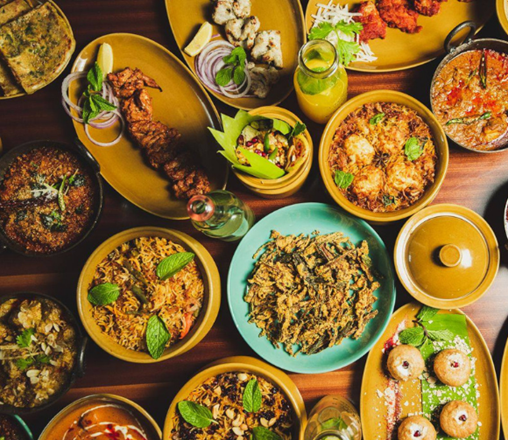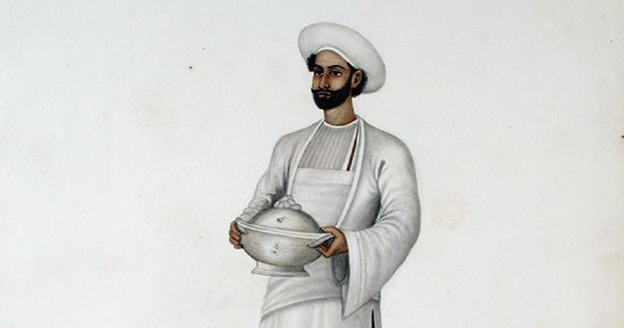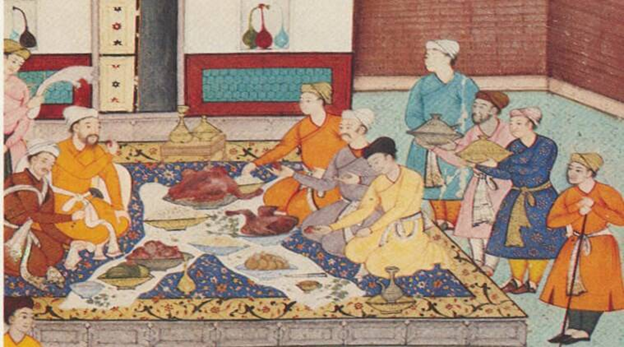THE MUGHAL CUISINE

India’s culinary heritage is a rich tapestry woven with diverse flavors, spices, and techniques. Among the various regional cuisines that have shaped the country’s gastronomic landscape, Mughal cuisine stands out as a crowning jewel.
Combining Persian, Central Asian, and Indian influences, Mughal food reflects the opulence and grandeur of the Mughal Empire, which reigned over the Indian subcontinent from the 16th to the 19th century.
The historical roots of Mughal cuisine can be traced back to the early 16th century when Babur, the first Mughal emperor, invaded India from Central Asia. The Mughals, who were originally of Turkic and Mongol descent, brought with them a rich culinary heritage that was deeply influenced by Persian and Central Asian cuisines.
During their reign, the Mughals integrated themselves into the Indian society and adopted several local customs, including food. This blending of cultures gave rise to the unique and extravagant Mughal cuisine we know today.
The Mughal emperors, particularly Akbar, were renowned for their love of food and patronage of culinary arts. They established royal kitchens and employed skilled chefs, or “khansamas,” who were responsible for creating elaborate and flavorful dishes fit for the royal court.

The Mughals introduced a variety of ingredients, spices, and cooking techniques into Indian cuisine. Persian influences brought in ingredients like saffron, dried fruits, nuts, and aromatic spices such as cardamom, cinnamon, and cloves. These ingredients were combined with Indian flavors and techniques, resulting in a fusion that gave Mughal cuisine its distinctive character.
The Mughals also had a profound impact on the culinary traditions of the regions they ruled. They introduced new cooking methods such as “Dum Pukht,” which involved slow-cooking food in a sealed pot to retain flavors and moisture. This technique is still widely used in the preparation of Biryani and Korma.
Flavorful Delicacies:
Biryani
The Mughal version of Biryani is a fragrant rice dish cooked with aromatic spices, basmati rice, and succulent meat (usually lamb or chicken). Each grain of rice absorbs the flavors, resulting in a heavenly blend of spices, meat, and saffron.
Kebabs
Mughal cuisine introduced an exquisite range of kebabs to Indian gastronomy. Whether it’s the succulent Seekh Kebab, the velvety Galouti Kebab, or the flavorful Boti Kebab, these charcoal-grilled meat delights are a testament to the Mughal’s culinary finesse.
Nihari
A slow-cooked stew traditionally prepared with beef or lamb, Nihari is simmered for hours to achieve tender meat and a rich, spicy gravy. This flavorsome dish is often enjoyed with naan or roti, and its indulgence is a culinary experience like no other.
Korma
Korma, a creamy and mildly spiced meat or vegetable curry, is another iconic dish of Mughal cuisine. The use of aromatic spices, yogurt, and ground nuts creates a velvety texture and a harmonious blend of flavors.
Rogan Josh
Rogan Josh, a delightful culinary creation, has an interesting origin story. It was originally a Persian lamb dish that made its way to Kashmir, India, courtesy of the Mughals. Over time, it has become an integral part of Kashmiri cuisine and is cherished by locals and visitors alike.
Rogan Josh is a true testament to the culinary fusion that occurred during the Mughal era, where Persian influences seamlessly merged with Indian flavors.
Sweet Temptations
No Mughal meal is complete without an indulgence in their delectable sweet treats. The Mughals had a sweet tooth, and their desserts are legendary. From the rich and creamy Shahi Tukda (bread pudding) to the fragrant and exquisite Phirni (rice pudding), Mughal desserts offer a delightful finale to a grand feast.

Today, Mughal cuisine continues to be celebrated and enjoyed, both within India and around the world. The flavors, techniques, and culinary legacy of the Mughals have endured, contributing to the rich tapestry of Indian cuisine. Exploring Mughal food allows us to delve into a fascinating chapter of history and experience the culinary artistry that defined the era of the Mughal Empire.




